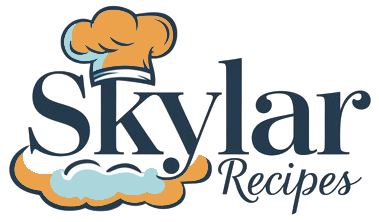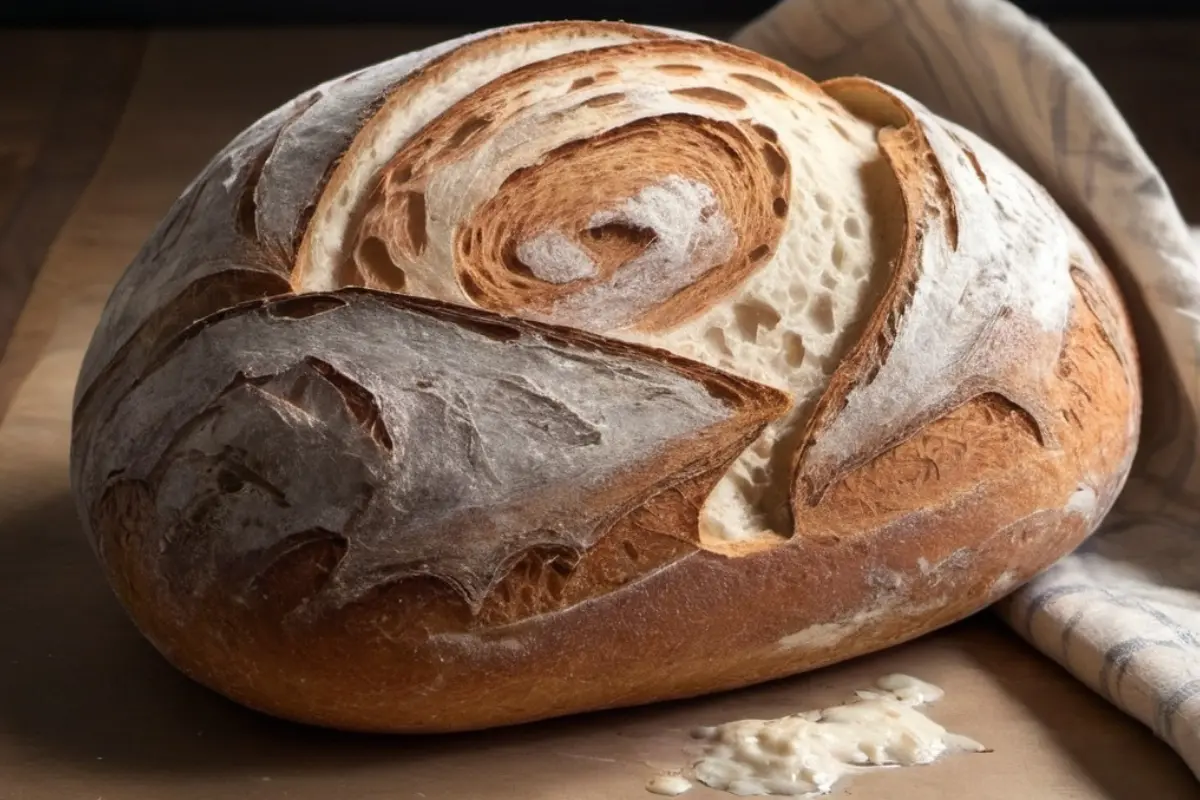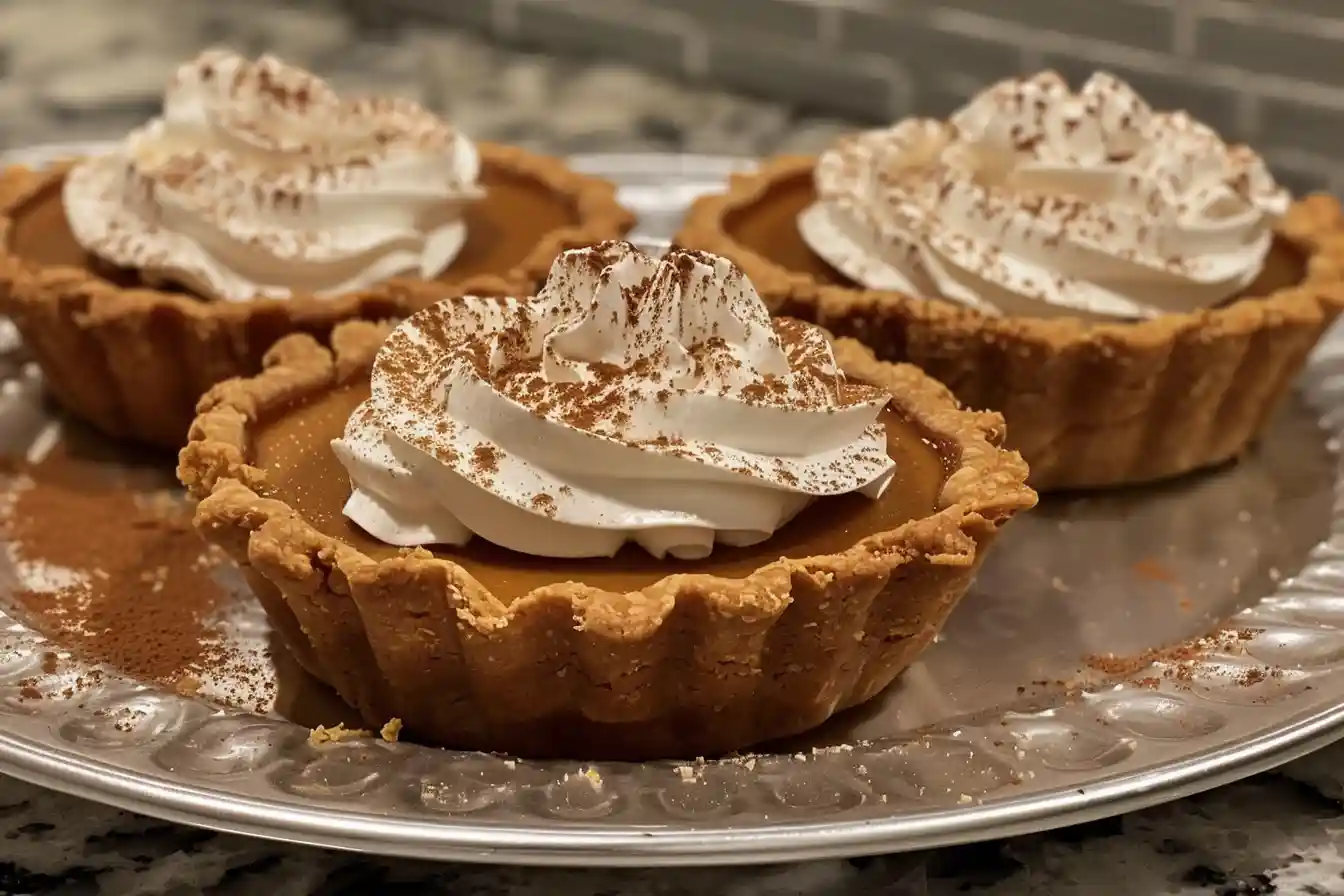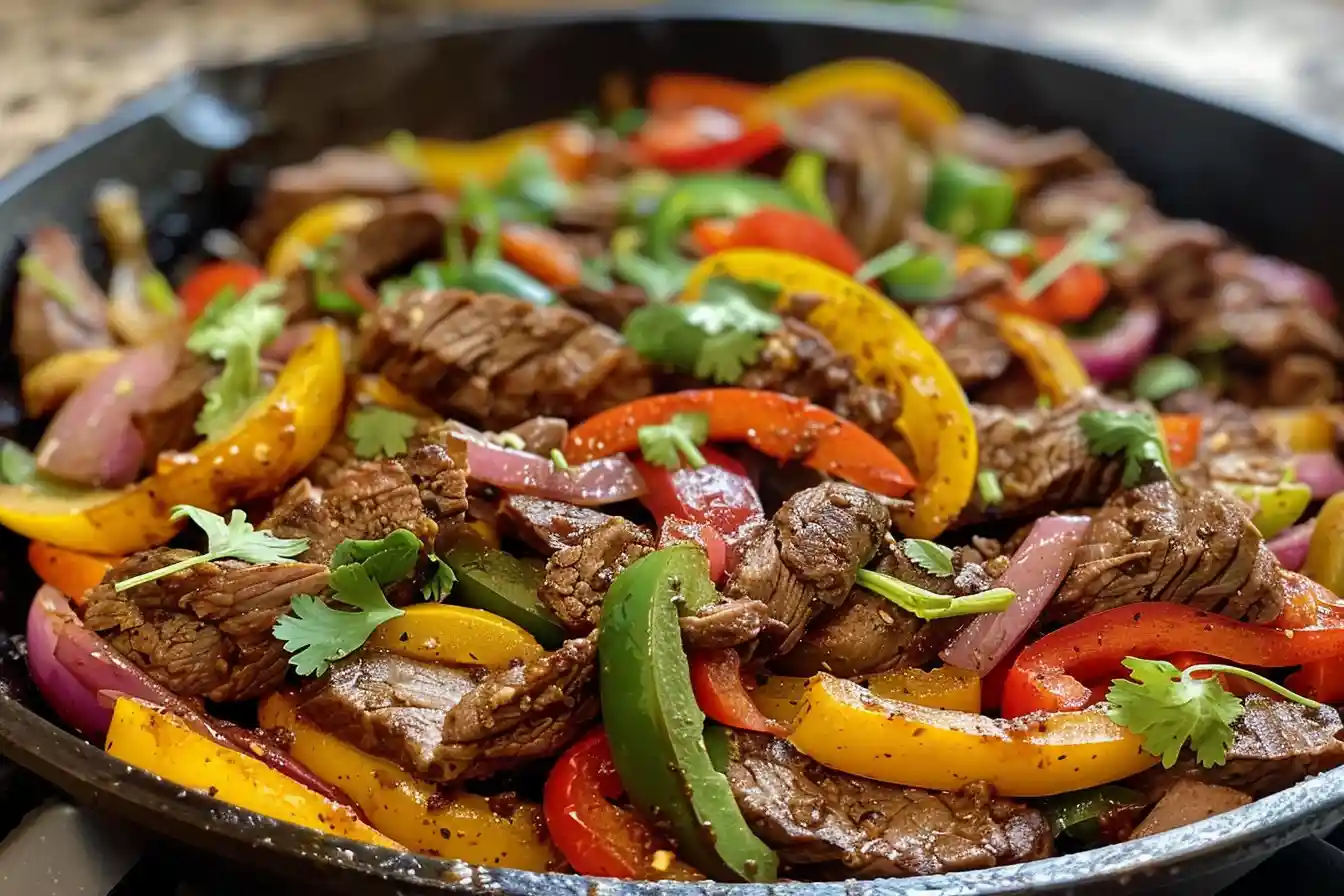How healthy is sourdough discard? This question is often asked by home bakers who have taken up the art of sourdough bread making. The sourdough starter, a living culture of flour and water, requires regular feeding, which results in the accumulation of sourdough discard. While many may think of this discard as waste, it holds potential health benefits and can be used in a variety of recipes.
Understanding the health implications, nutritional value, and safe usage of sourdough discard can transform your approach to this often-overlooked byproduct.
What Exactly is Sourdough Discard?
Before exploring how healthy is sourdough discard, it’s crucial to clarify what sourdough discard actually is. Sourdough discard is the portion of the starter that is removed before feeding it with fresh flour and water. This process of discarding a portion ensures that the starter remains manageable and prevents it from growing too large.
Though it might seem like waste, this discard is full of life, containing active yeasts and beneficial bacteria that have been developed through fermentation.
The Nutritional Composition of Sourdough Discard
To answer how healthy is sourdough discard, we need to delve into its nutritional composition. Sourdough discard, depending on the type of flour used, offers a range of nutrients:
1. Carbohydrates and Fiber
Sourdough discard contains carbohydrates, primarily from the flour used to feed the starter. If whole-grain flour is utilized, the discard also provides dietary fiber, which is essential for digestive health, promoting regular bowel movements, and supporting heart health by helping to lower cholesterol levels.
2. Protein Content
The discard provides a moderate amount of protein, which is a vital macronutrient necessary for muscle repair, growth, and overall body maintenance. The protein content may vary depending on the type of flour, with whole grains generally offering more.
3. Vitamins and Minerals
Sourdough discard can be a source of important vitamins and minerals. Whole wheat or rye flour, for instance, can provide B vitamins (such as niacin, thiamin, and riboflavin), which are crucial for energy metabolism. Additionally, minerals like iron, magnesium, and zinc may be present, supporting various bodily functions such as oxygen transport, immune function, and enzyme reactions.
4. Probiotics and Prebiotics
One of the unique health aspects of sourdough discard is its probiotic content. The fermentation process involves the growth of lactic acid bacteria, which can act as probiotics—beneficial bacteria that promote a healthy gut microbiome. Moreover, the fiber in whole-grain flour acts as a prebiotic, feeding these good bacteria and supporting overall digestive health.

Health Benefits of Using Sourdough Discard
Now that we’ve discussed the nutritional components, let’s explore the health benefits that come with using sourdough discard. The question how healthy is sourdough discard becomes more apparent as we consider these benefits :
1. Supports Digestive Health
The lactic acid bacteria present in sourdough discard aid in breaking down gluten and other proteins, making it easier for the body to digest. This is particularly beneficial for individuals with mild gluten sensitivities. The presence of probiotics in the discard also contributes to a healthy gut by maintaining a balance of good bacteria, which is essential for digestion, nutrient absorption, and even mental health.
2. Glycemic Control
Sourdough, and by extension sourdough discard, has a lower glycemic index compared to many other breads. This means that it causes a slower and more gradual rise in blood sugar levels after consumption. Incorporating sourdough discard into meals can help in managing blood sugar levels, making it a suitable option for individuals with diabetes or those looking to prevent spikes in blood sugar.
3. Enhanced Mineral Absorption
Phytic acid, naturally found in many grains, can inhibit the absorption of essential minerals like calcium, iron, and zinc. However, the fermentation process in sourdough discard reduces phytic acid levels, thus enhancing the bioavailability of these minerals. This can be particularly beneficial for individuals with diets high in grains and legumes, as it helps improve overall mineral absorption.
4. Potential Weight Management Benefits
Due to its fiber content and lower glycemic index, sourdough discard may help in weight management. Fiber increases satiety, helping you feel fuller for longer, which can reduce overall calorie intake. Additionally, the slower release of sugar into the bloodstream helps prevent insulin spikes, which are often associated with fat storage.

Creative and Healthy Recipes Using Sourdough Discard
Once you understand how healthy is sourdough discard? the next step is to incorporate it into your diet through various recipes. Here are some healthy and creative ways to use sourdough discard :
1. Sourdough Discard Pancakes
A popular and delicious way to use sourdough discard is in pancakes. These pancakes are not only tasty but also packed with the probiotics and nutrients found in sourdough discard.
Ingredients:
- 1 cup sourdough discard
- 1 cup all-purpose flour (or whole wheat for more fiber)
- 1 cup milk (dairy or plant-based)
- 1 large egg
- 1 tablespoon sugar (optional)
- 1 teaspoon baking powder
- 1/2 teaspoon salt
- 1 tablespoon melted butter or oil
Instructions:
- In a mixing bowl, whisk together the sourdough discard, flour, milk, egg, sugar, baking powder, and salt until smooth.
- Heat a non-stick skillet or griddle over medium heat and lightly grease with butter or oil.
- Pour 1/4 cup of batter onto the skillet for each pancake.
- Cook until bubbles form on the surface and the edges appear set, then flip and cook the other side until golden brown.
- Serve warm with fresh fruit, yogurt, or a drizzle of honey for a nutritious breakfast.
2. Sourdough Discard Crackers
For a healthy, crunchy snack, try making sourdough discard crackers. These crackers can be seasoned with herbs and spices, providing a tasty and fiber-rich alternative to store-bought options.
Ingredients:
- 1 cup sourdough discard
- 1/2 cup whole wheat flour
- 2 tablespoons olive oil
- 1/2 teaspoon salt
- 1/4 teaspoon garlic powder (optional)
- 1/4 teaspoon dried rosemary or thyme (optional)
Instructions:
- Preheat the oven to 350°F (175°C).
- In a bowl, combine the sourdough discard, whole wheat flour, olive oil, salt, garlic powder, and herbs.
- Mix until a dough forms, then roll it out thinly between two sheets of parchment paper.
- Remove the top layer of parchment and cut the dough into squares or desired shapes.
- Place the parchment with the dough onto a baking sheet and bake for 15-20 minutes until golden and crisp.
- Allow to cool completely before storing in an airtight container.
3. Sourdough Discard Pizza Crust
Transform your pizza nights with a homemade sourdough discard pizza crust. The tangy flavor and chewy texture of this crust are unmatched, and it’s a healthier option than traditional pizza dough.
Ingredients:
- 1 cup sourdough discard
- 2 cups all-purpose flour
- 1 teaspoon salt
- 1 tablespoon olive oil
- 1/2 cup water (more if needed)
Instructions:
- In a large bowl, mix the sourdough discard, flour, salt, olive oil, and water until a dough forms.
- Knead the dough on a floured surface for 5-7 minutes until smooth and elastic.
- Place the dough in an oiled bowl, cover, and let it rise for 2-3 hours at room temperature or overnight in the refrigerator.
- Preheat your oven to 450°F (230°C). Roll out the dough to your desired thickness and place it on a baking sheet or pizza stone.
- Add your favorite toppings and bake for 10-15 minutes until the crust is golden and the cheese is bubbly.
4. Sourdough Discard Muffins
Muffins made with sourdough discard are moist and flavorful. You can make them even healthier by adding fruits, nuts, or seeds.
Ingredients:
- 1 cup sourdough discard
- 1 1/2 cups whole wheat flour
- 1/2 cup honey or maple syrup
- 1/2 cup milk (dairy or plant-based)
- 1/4 cup melted coconut oil or butter
- 1 large egg
- 1 teaspoon baking soda
- 1/2 teaspoon salt
- 1 cup fresh or frozen berries, chopped nuts, or seeds
Instructions:
- Preheat your oven to 350°F (175°C). Line a muffin tin with paper liners or grease it.
- In a large bowl, whisk together the sourdough discard, flour, honey, milk, melted coconut oil, egg, baking soda, and salt until well combined.
- Fold in the berries, nuts, or seeds.
- Divide the batter evenly among the muffin cups.
- Bake for 20-25 minutes or until a toothpick inserted into the center of a muffin comes out clean.
- Allow the muffins to cool in the pan for 5 minutes before transferring them to a wire rack to cool completely.
The Environmental and Ethical Benefits of Using Sourdough Discard
In addition to the personal health benefits, using sourdough discard has broader environmental and ethical implications. When considering how healthy is sourdough discard? it’s important to recognize that it can also contribute to reducing food waste.
1. Reducing Food Waste
Every year, a significant amount of food is wasted globally, contributing to environmental degradation and resource depletion. By finding uses for sourdough discard, you can help reduce food waste in your kitchen. Instead of discarding this valuable byproduct, you can repurpose it into delicious and nutritious foods.
2. Sustainable Baking Practices
Using sourdough discard aligns with sustainable baking practices. Traditional sourdough baking, with its reliance on natural fermentation rather than commercial yeast, is inherently more sustainable. By utilizing the discard, you further reduce waste and make the most out of every ingredient, supporting a more eco-friendly approach to baking.
3. Ethical Considerations
Ethically, reducing waste and making use of all available resources is a responsible approach to food consumption. In a world where food scarcity remains a significant issue, finding ways to minimize waste and maximize nutrition is not only beneficial for you but also contributes to a more ethical and sustainable food system.
Storing and Preserving Sourdough Discard
To fully benefit from sourdough discard’s health advantages, proper storage is essential. Here’s how you can ensure your discard stays fresh and safe to use:
1. Short-Term Refrigeration
For short-term storage, sourdough discard can be kept in the refrigerator. Place it in an airtight container to prevent it from drying out or absorbing other odors from the fridge. It can last for up to a week when stored this way.
2. Long-Term Freezing
If you have a large amount of discard or won’t be using it immediately, freezing is a great option. Divide the discard into portions, place it in airtight containers or freezer bags, and freeze. When you’re ready to use it, thaw the discard in the refrigerator overnight.
Recognizing Spoiled Sourdough Discard
While sourdough discard is generally safe to eat, it’s important to recognize when it has gone bad. Here’s what to look out for :
1. Mold Growth
Mold is a clear sign that your sourdough discard should not be used. If you notice any mold growth on the surface, discard the entire batch immediately, as consuming moldy foods can be harmful.
2. Off Smell
Sourdough discard should have a pleasant, tangy aroma. If it smells unpleasant, rancid, or overly sour, it’s best to discard it.
3. Unusual Texture
If the texture of your discard becomes slimy or overly watery, it may indicate spoilage. In such cases, it’s safer to discard it rather than risk using it in your cooking.
FAQs About Sourdough Discard
Yes, sourdough discard can be adapted for gluten-free baking, but you’ll need a gluten-free starter. Gluten-free sourdough discard can be used in the same way as traditional discard in recipes like pancakes, crackers, and muffins.
Yes, discarding part of the starter is essential to maintain a healthy and manageable sourdough culture. Without discarding, the starter would grow too large, and the balance of flour and water would be disrupted, potentially leading to a weaker starter.
Sourdough discard can be fed to animals like chickens or pigs in small amounts. However, it’s important to ensure that the discard does not contain any harmful ingredients, such as salt or sugar, that could be detrimental to the animals’ health.
Ideally, you should use your sourdough discard regularly to prevent it from going to waste. Incorporating it into weekly or bi-weekly baking routines can help you make the most of this nutritious byproduct.
Conclusion: How Healthy is Sourdough Discard?
In conclusion, how healthy is sourdough discard? The answer is that sourdough discard is a highly nutritious and versatile ingredient that can significantly benefit your health. Its rich content of fiber, protein, vitamins, minerals, and probiotics makes it a valuable addition to a balanced diet. Moreover, using sourdough discard helps reduce food waste, supports sustainable baking practices, and promotes ethical food consumption. Whether you’re making pancakes, crackers, pizza crust, or muffins, sourdough discard is an ingredient that should never be overlooked. By incorporating it into your cooking, you can enjoy both its health benefits and its contribution to a more sustainable and ethical food system.





